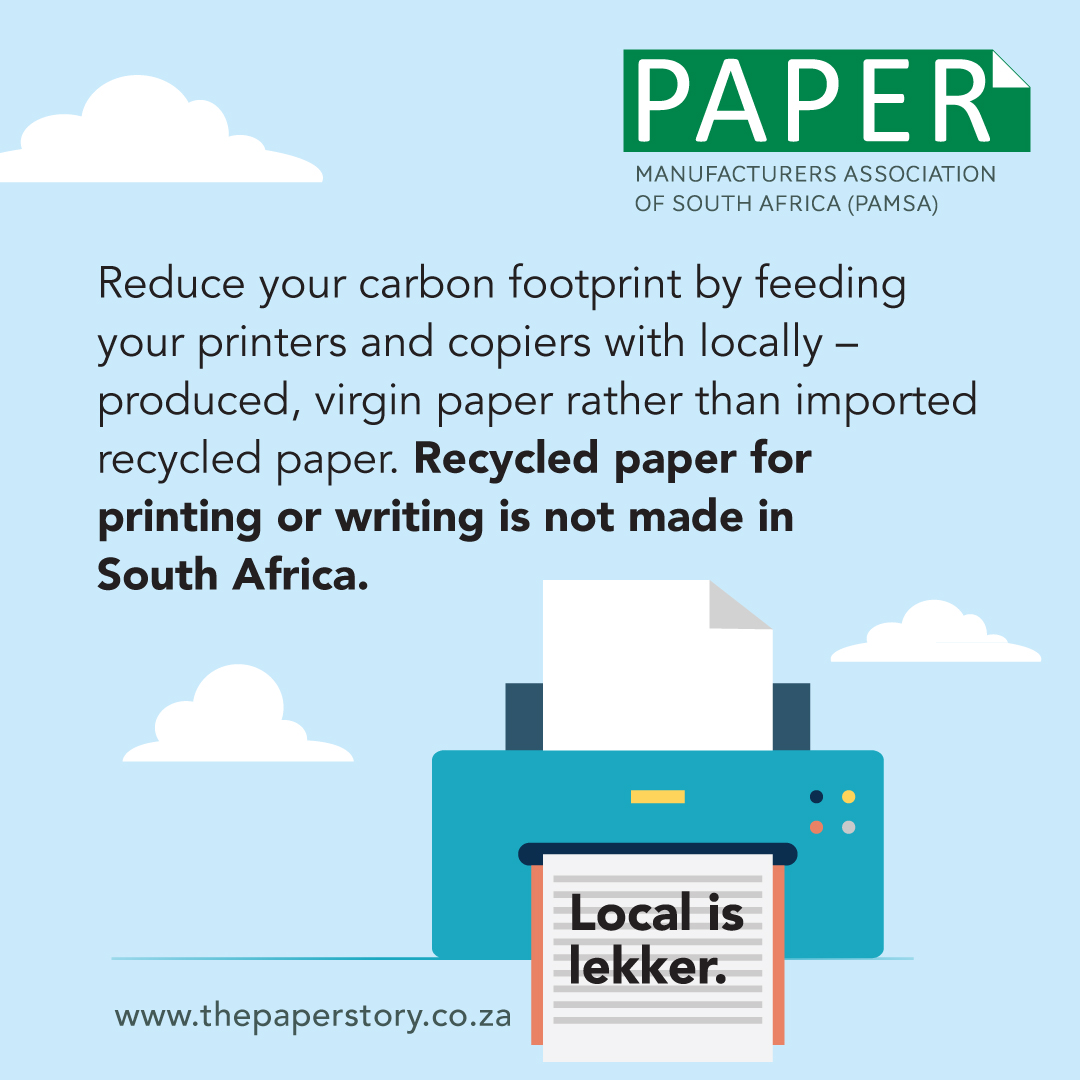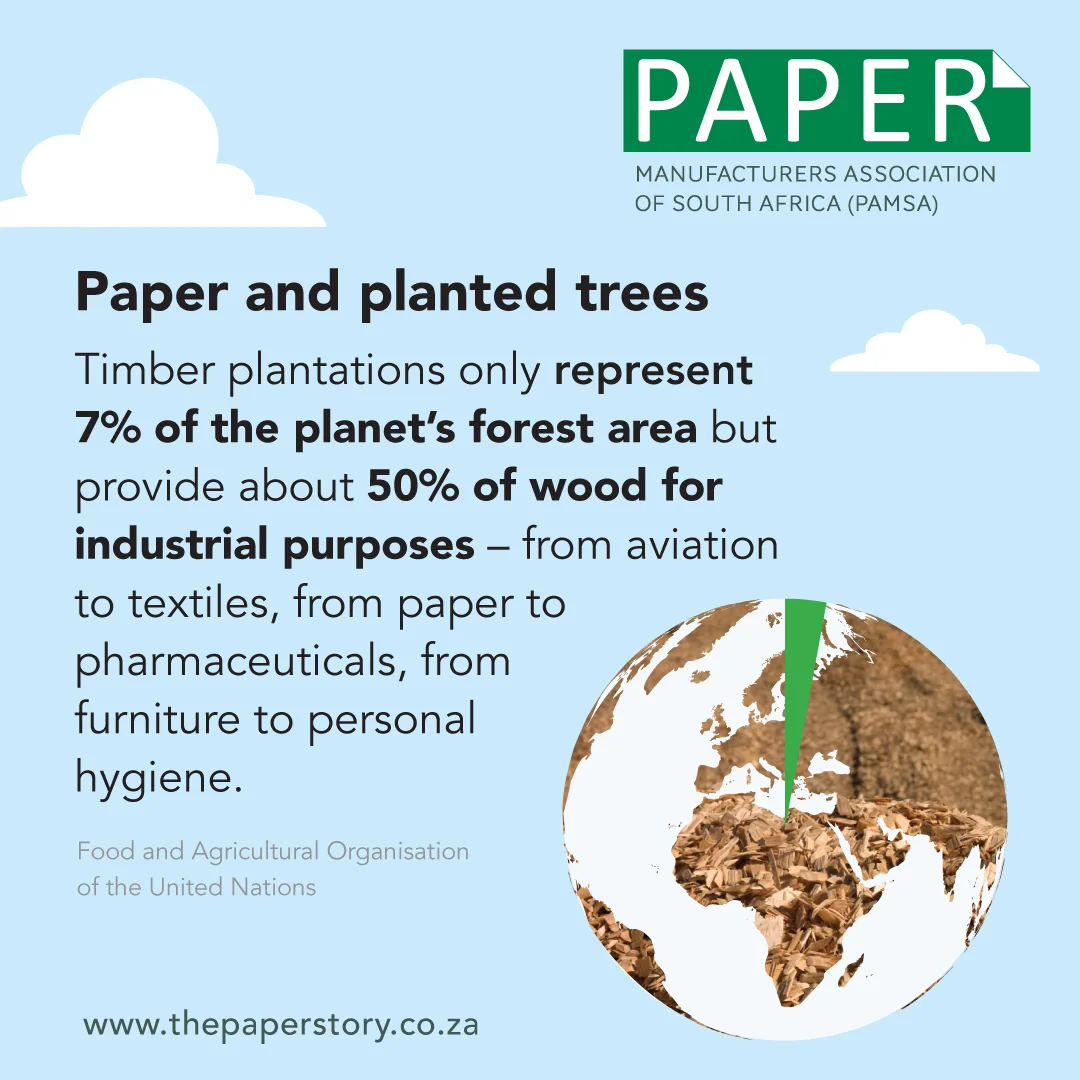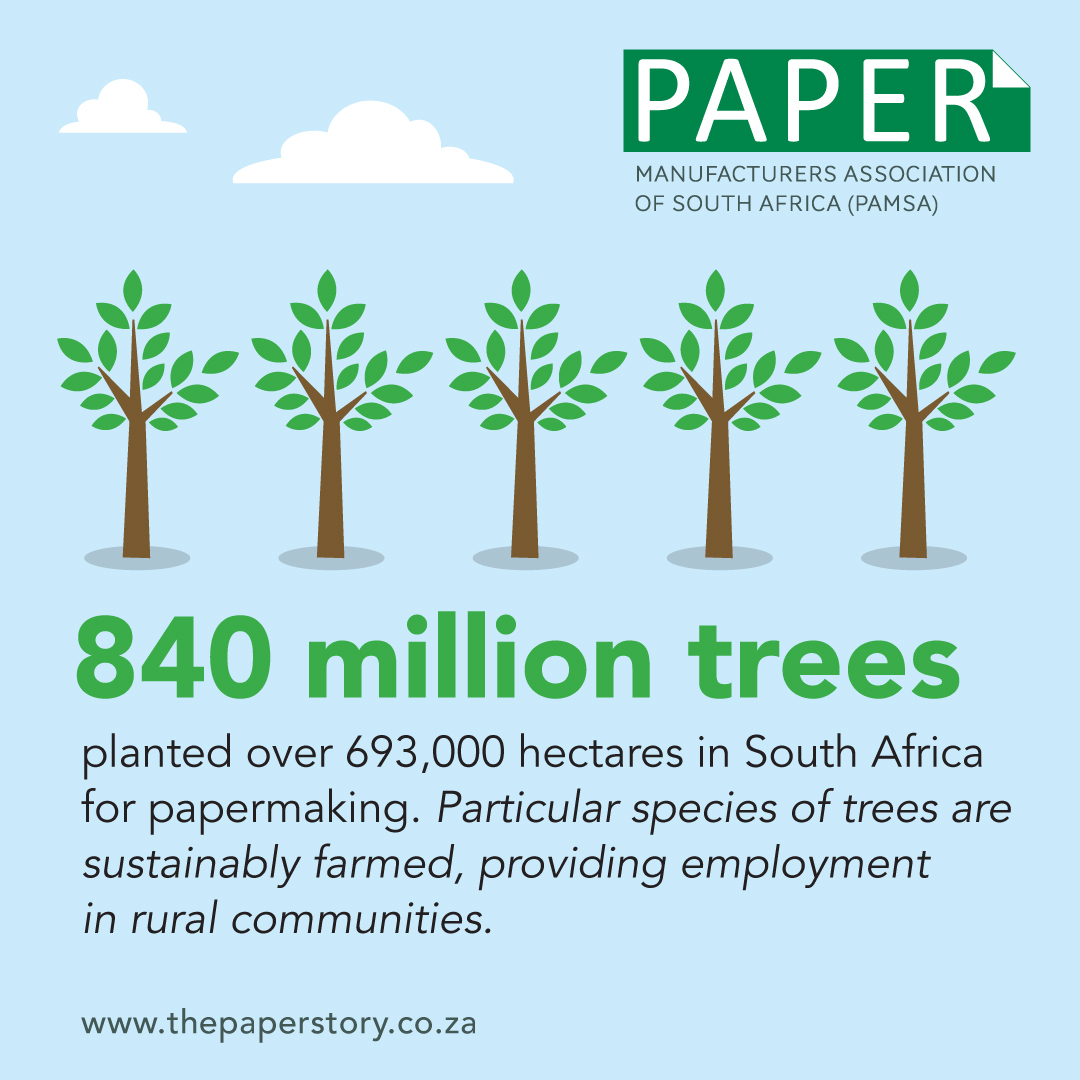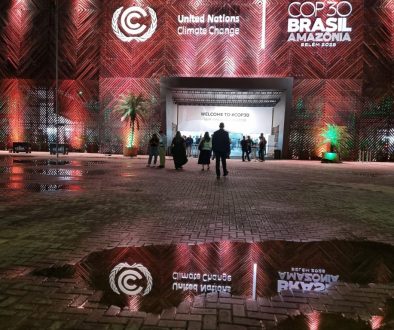New infographic makes a compelling case for paper



Did you know that most paper has its roots in farmed trees? Or that over seven million tonnes of paper, boxes and beverage cartons have been kept out of the landfill over the past six years?
The Paper Manufacturers Association of South Africa (PAMSA) has released its new infographic, highlighting the value of paper products, their countless uses and their value as a renewable and recyclable resource.
On one vividly illustrated page, the infographic tells the story of locally produced virgin paper originating from sustainably farmed trees – the heart of paper’s renewability – down to the importance of recycling paper, boxes and liquid packaging, such as milk and juice cartons.
It sketches paper in its multiple guises, its importance to society, how it is derived, recovered, recycled and how the planted trees dedicated to paper production contribute to the health of the environment.
In addition, the infographic draws attention to how the forestry-paper-recycling value chain provides employment for more than 150,000 people.
It also debunks some of the myths and misunderstandings surrounding this versatile product that we rely on every day for hygiene, packaging, product information, communication, reading and marketing.
Debunking deforestation
“Unfortunately paper has been given a bad rap despite the fact that it comes from commercially farmed plantations and not indigenous forests,” says PAMSA executive director Jane Molony.
The familiar clarion calls like ‘save trees, do not print this email’ are both misleading and counterproductive, says Molony.
“We’re working incredibly hard to create an awareness among consumers of the difference between sustainable forestry and deforestation,” says Molony. Deforestation involves the clearing of forests, without replanting, whereas the forest product sector adopts a sustainable approach for the production of paper and timber products.
In South Africa, 840 million trees are managed by the sector, and for every tree harvested, a sapling is planted in the same place during the same year. Incidentally, only 6% of these trees are harvested annually, thereby ensuring sustainable farming of this renewable resource.
All trees – including plantations – absorb greenhouse gases like carbon dioxide from the atmosphere and store it as carbon in their wood, roots and leaves. The carbon stays locked up even when the wood pulped and made into paper, and even longer when paper and paper packaging is recycled.
Seven millions tonnes of paper diverted from landfill
In the past six years alone, the paper recycling industry along with conscientious consumers and thousands of informal collectors have kept seven million tonnes of paper out landfill so that they can be remanufactured into brand-new products.
The Paper Recycling Association of South Africa (RecyclePaperZA) recently announced that South Africa’s paper recovery rate for 2017 was 70%. This means of the 1,8 million tonnes of paper, boxes and beverage cartons that can be recovered, 1,3 million tonnes have been reclaimed for re-use in new paper products.
Pick your printer paper carefully
PAMSA also encourages people to use locally produced virgin printing/copying paper as recycled grades are not made in South Africa. “If you’re using recycled paper in your office printer, it’s most likely imported, which carries a carbon footprint.”
Make sure that the paper you use is produced from sustainably managed plantations, carrying recognised marks of certification by the Forest Stewarship Council (FSC®), the Sustainable Forestry Initiative (SFI®) or the Programme for the Endorsement of Forest Certification (PEFC™).



